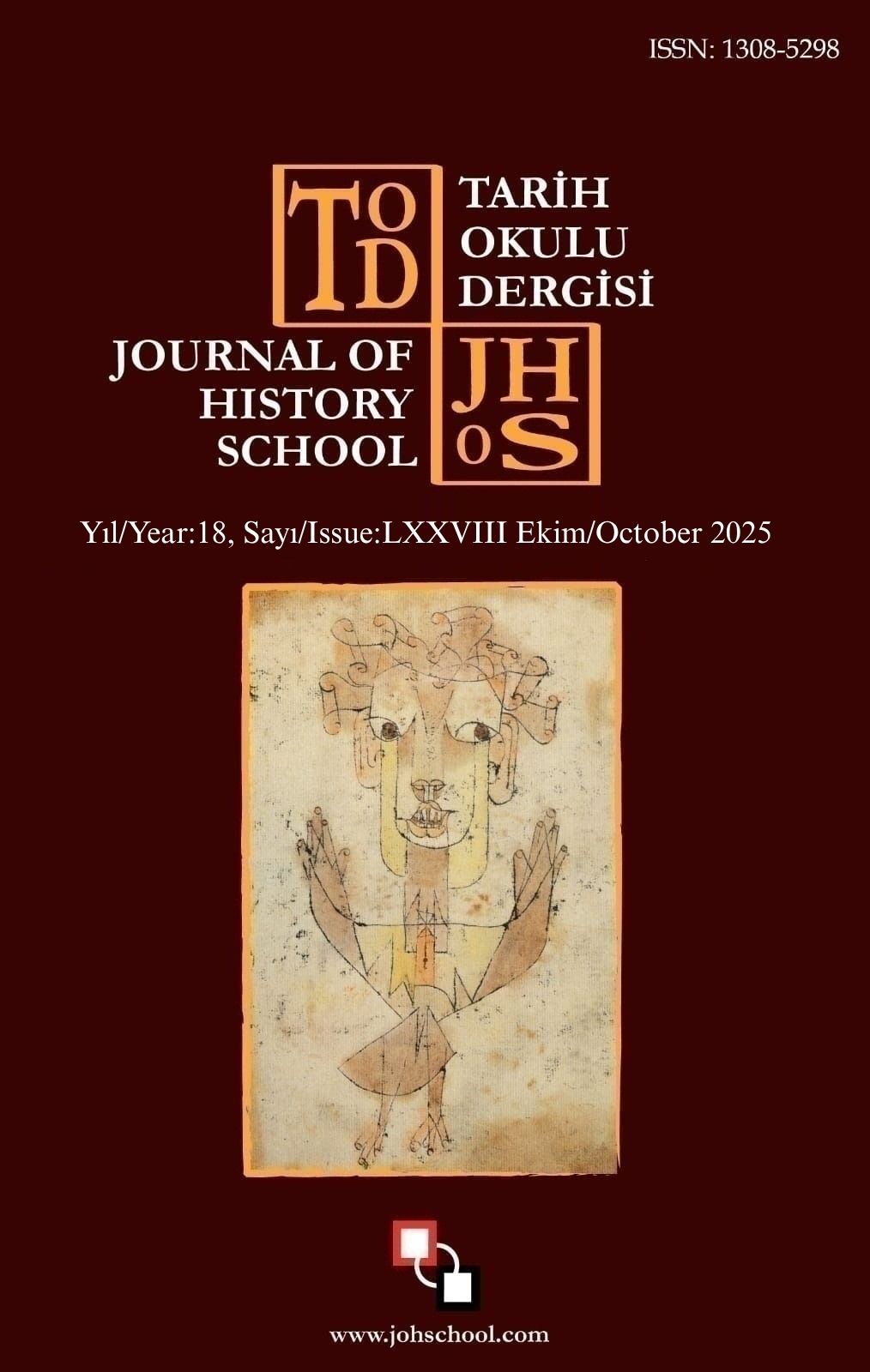TEKELİ MEHMET PAŞA CAMİİ’NİN PENCERE ALINLIKLARINDAKİ ÇİNİ SÜSLEMELERİN ÜSLUP BAKIMINDAN İNCELENMESİ
Author :
Abstract
Bu makale Antalya'nın tarihi Kaleiçi semtinde bulunan ve Osmanlı döneminin önemli mimari eserlerinden olan, Tekeli Mehmed Paşa Camii’nin iç ve dış kısmında yer alan pencere alınlıklarındaki çini süslemelerin sanatsal analizini konu almaktadır. Caminin III. Murad döneminde önemli idari görevlerde bulunmuş olan Tekeli Mehmed Paşa tarafından kesin tarihi belli olmamakla birlikte 1610’lu yıllarda yapıldığı düşünülmektedir. Caminin en özgün ve dikkat çekici özelliği, iç ve dış pencere alınlıklarında bulunan çini panolarda talik hattıyla yazılmış Münferice Kasîdesi’dir. Bu yönüyle Tekeli Mehmed Paşa Camii, pencere alınlıklarında Ayet veya Hadis yerine bir Kasîde’nin yer almasıyla dünyada bilinen tek örnek olarak öne çıkmaktadır. Caminin süslemesinde 17. yüzyıla ait İznik çinilerinin sır altı tekniği ile bezenmiş karolar taş işçiliği ile kullanılmıştır. Beyaz, lacivert, firuze, yeşil ve mercan kırmızısı renklerle bezenmiş çinilerde hatai, penç, gonca, yaprak, lâle ve rumi gibi klasik Osmanlı motiflerine yer verilmiştir. Söz konusu caminin mimari özellikleri kısaca tanıtıldıktan sonra, özgünlük açısından büyük önem taşıyan çini panolar üzerindeki Münferice Kasîdesi'nin özellikle bezeme üslubu kullanılan motiflerden oluşan kompozisyon ve süsleme anlayışı ayrıntılı bir biçimde çini sanatı açsısından incelenecektir. Çalışmanın amacı, Osmanlı döneminde yapılmış bu mimari eser hem sanat tarihi hem de Osmanlı hat ve çini sanatı açısından taşıdığı önemi ortaya koymaktır.
Keywords
Abstract
It is about the artistic analysis of the tile decorations on the interior and exterior of the window pediments of Tekeli Mehmed Pasha Mosque, which is located in the historical Kaleiçi district of Antalya and is one of the important architectural works of the Ottoman period. Although the exact date is not known, it is thought to have been built in the 1610s by Tekeli Mehmed Pasha, who held important administrative positions during the reign of Murad III. The most unique and striking feature of the mosque is the Münferice Qasida written in talik script on the tile panels on the interior and exterior window pediments. In this respect, Tekeli Mehmed Pasha Mosque stands out as the only known example in the world with a Qasida instead of a verse or Hadith on the window pediments. Tiles decorated with the underglaze technique of 17th century İznik tiles were used together with stonework in the decoration of the mosque. The tiles decorated with white, navy blue, turquoise, green and red colors feature classic Ottoman motifs such as hatai, penç, bud, leaf, tulip and rumi. After briefly introducing the architectural features of the mosque in question, the writing technique of the Münferice Qasida on the tile panels, which are of great importance in terms of originality, especially the composition and ornamentation concept consisting of motifs used in the ornamental style, will be examined in detail in terms of tile art. The aim of the study is to reveal the importance of this architectural work built during the Ottoman period in terms of both art history and Ottoman calligraphy and tile art.





